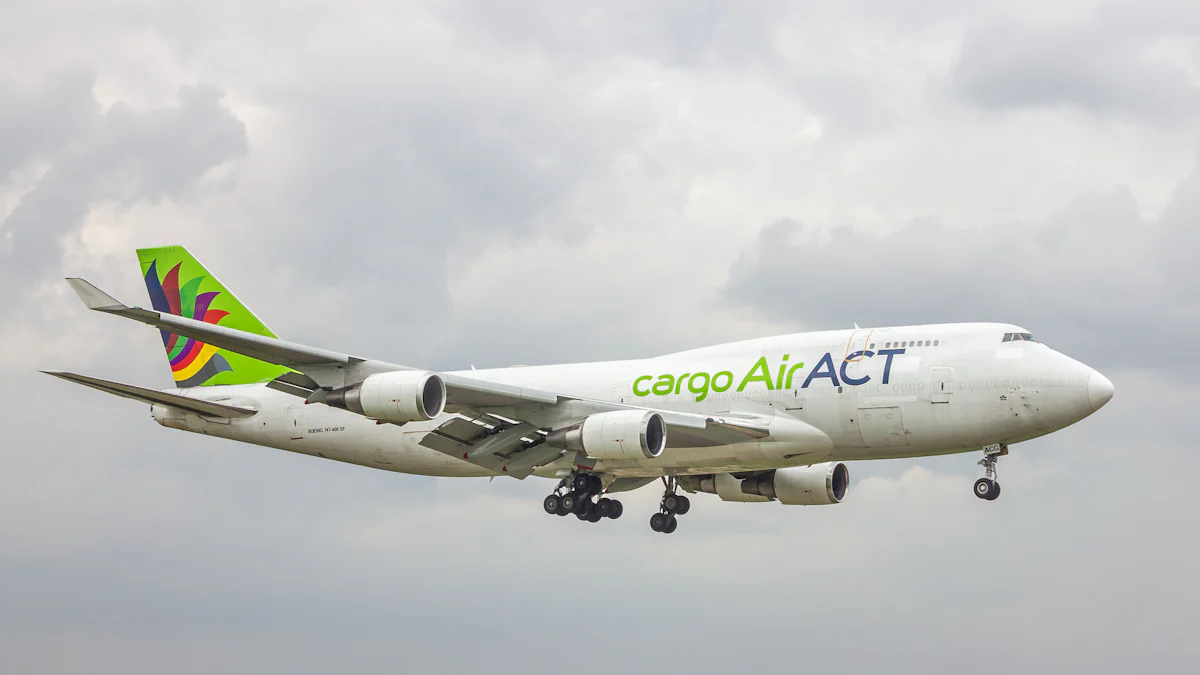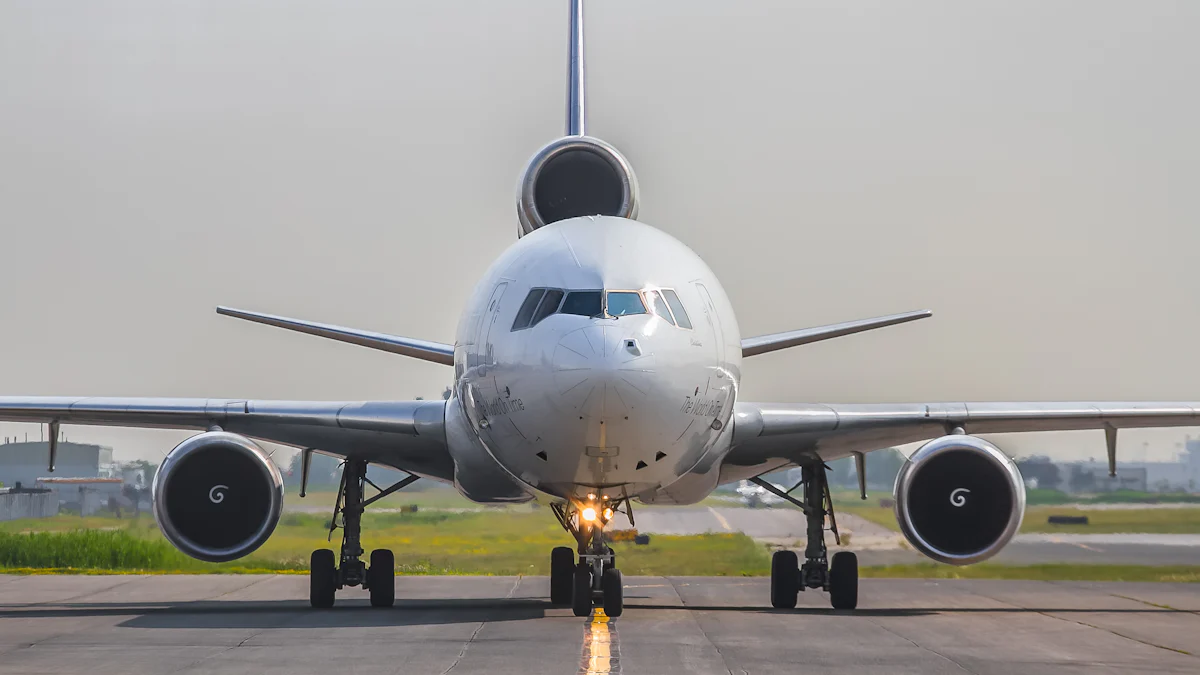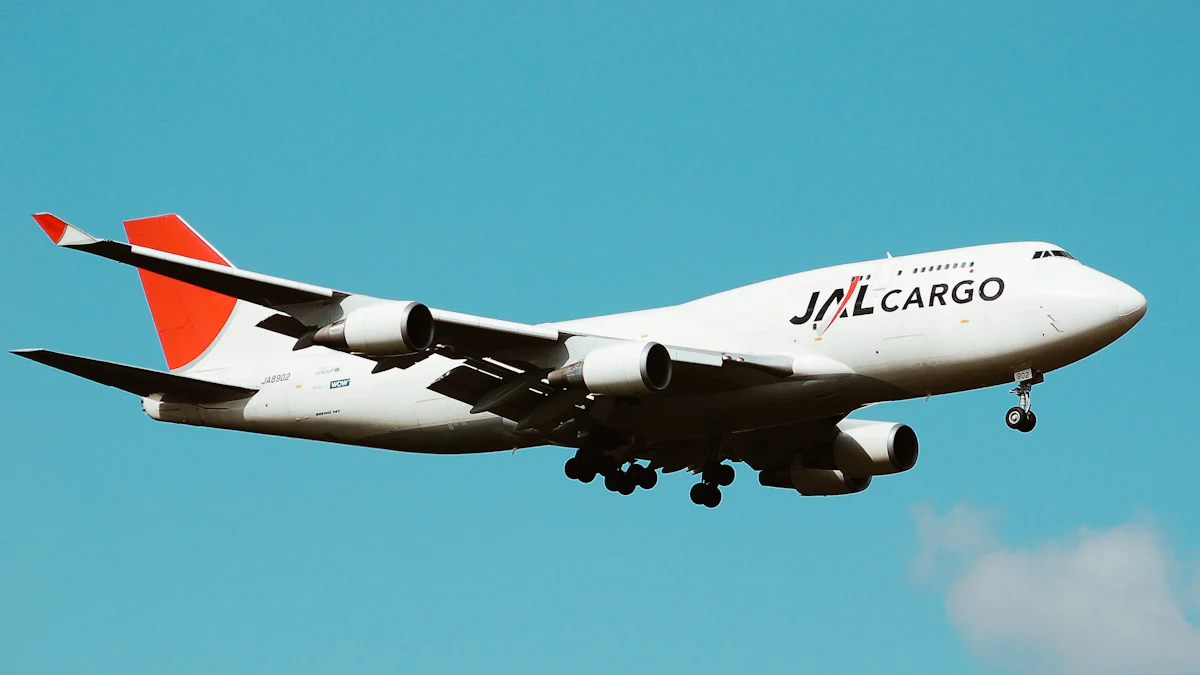Predicting Growth in the Air Freight Market Through 2030

The Air Freight Market plays a pivotal role in global trade. This sector facilitates the swift movement of goods across continents. The Air Freight industry has witnessed significant growth, with the Market size reaching 97.92 million metric tons in 2023. Predicting growth trends in the Air Freight Market is crucial for strategic planning. Accurate Forecast Trend assessments enable stakeholders to make informed decisions. The Air Freight Market Analysis reveals a robust expansion trajectory. The air cargo sector benefits from technological advancements and the rise of e-commerce. The Freight industry anticipates continued growth, driven by increasing demand for air cargo services.
Air Freight Market Overview

Current Air Freight Market Size and Trends
Global Air Freight Market Size
The Global Air Freight Market has experienced substantial growth. The Air Freight Market Size reached approximately 97.92 million metric tons in 2023. This growth reflects the increasing demand for efficient transportation solutions. The Air Freight Market plays a crucial role in global trade. The Air Freight Market Size continues to expand due to the rise of e-commerce and international trade activities. The Air Freight Market Forecast indicates further expansion. The Air Freight Market Size is projected to reach new heights by 2030.
Key Trends Influencing the Air Freight Market
Several key trends influence the Air Freight Market. The rapid growth of e-commerce drives demand for air cargo services. The Air Freight Market benefits from technological advancements. Innovations streamline the booking process for logistics companies. The Air Freight Market also witnesses increased demand due to rising international trade activities. Supply chain optimization fuels the Air Freight Market Growth. The Air Freight Market Revenue continues to rise as new manufacturing hubs emerge. These trends contribute to the robust Air Freight Market Growth Projections.
Historical Growth Patterns
Past Decade Analysis of Air Freight
The past decade has seen significant developments in the Air Freight Historical Market. Deregulation acts in the late 20th century facilitated growth. The lifting of cargo transport restrictions allowed for expansion. The Air Freight Historical Market analysis reveals a steady increase in demand. The Air Freight Historical Price trends show fluctuations influenced by economic factors. The Air Freight Historical Market witnessed a transformation with the advent of e-commerce. The Air Freight Historical Market continues to evolve, adapting to new challenges and opportunities.
Lessons Learned from Historical Data in the Air Freight Market
Historical data provides valuable insights into the Air Freight Historical Market. The Freight Historical Price Trends highlight the impact of external factors. The Air Freight Historical Price trends offer lessons for future planning. The Air Freight Historical Market demonstrates the importance of adaptability. The Air Freight Historical Market teaches the significance of strategic investments. The Air Freight Market Based on historical data emphasizes the need for innovation. The Air Freight Market must continue to evolve to meet changing demands.
Air Freight Market Dynamics
Drivers
Technological Advancements in Air Freight
Technological advancements significantly impact the Air Freight industry. Companies integrate automation and artificial intelligence to enhance operational efficiency. The use of advanced tracking systems improves transparency in the Air Freight Market. Real-time monitoring through IoT sensors ensures safe transport of sensitive goods. Lufthansa Cargo, for instance, utilizes IoT to monitor cargo conditions. These advancements optimize processes and secure shipments. The Air Freight Market benefits from increased reliability and speed. Blockchain technology enhances supply chain visibility. Innovations continue to reshape the Air Freight landscape.
Increasing Global Trade and its Impact on Air Freight
Global trade influences the Air Freight Market. The demand for rapid transportation of goods increases. Air Freight plays a crucial role in international trade activities. The Market supports high-value and time-sensitive shipments. Emerging markets contribute to the growth of air cargo services. The rise in e-commerce further drives the Air Freight Market. The need for efficient logistics solutions becomes evident. Air Freight companies expand their services to meet global demands. The Market experiences robust growth due to these factors.
Restraints
Regulatory Challenges in the Air Freight Market
Regulatory challenges present obstacles in the Air Freight Market. Compliance with aviation safety regulations is essential. Environmental standards impose additional requirements on Air Freight operations. Customs procedures and duties affect the efficiency of air cargo services. Companies must navigate complex regulatory landscapes. These challenges impact the overall growth of the Air Freight Market. Stakeholders must address these issues to ensure seamless operations. Strategic planning becomes vital in overcoming regulatory hurdles.
Environmental Concerns Affecting Air Freight
Environmental concerns influence the Air Freight industry. The need for sustainable practices becomes apparent. Air Freight companies face pressure to reduce carbon emissions. The adoption of sustainable aviation fuels gains importance. Environmental standards shape the future of the Air Freight Market. Companies invest in eco-friendly technologies to meet these standards. The industry seeks innovative solutions to minimize environmental impact. These efforts contribute to the long-term sustainability of the Air Freight Market.
Opportunities
Emerging Markets for Air Freight
Emerging markets offer growth opportunities for the Air Freight industry. The expansion of manufacturing hubs drives demand for air cargo services. Air Freight companies explore new regions to expand their reach. The Market benefits from increased trade activities in these areas. Companies adapt their strategies to capitalize on these opportunities. The potential for growth in emerging markets remains significant. Air Freight services become essential for global connectivity.
Innovations in Logistics within the Air Freight Market
Innovations in logistics transform the Air Freight Market. Advanced technologies streamline the booking process. Companies implement digitalization to enhance operational efficiency. Automation optimizes logistics and reduces costs. The integration of cutting-edge solutions improves service quality. Air Freight companies focus on innovation to stay competitive. The Market evolves with the adoption of new logistics practices. These innovations drive the growth and success of the Air Freight industry.
Regional and Segmental Analysis of the Air Freight Market

Regional Breakdown
North America Air Freight Market
The North America air freight market demonstrates significant growth potential. The region's robust infrastructure supports efficient air freight services. The America air freight market benefits from technological advancements in air cargo operations. Major hubs in the United States and Canada drive the air freight sector. The Air Freight Market Report highlights North America's strategic importance in global trade. America Air Freight Historical data indicates a steady increase in demand. The global air freight sector relies on North America's capacity to handle high-value goods. Air freight services offer reliable solutions for time-sensitive shipments.
Europe Air Freight Market
The Europe Air Freight Market shows resilience amid economic fluctuations. Key players in the region invest in sustainable practices. The Freight Industry Embraces Sustainability to meet environmental standards. Europe Air Freight Historical trends reveal adaptability to changing regulations. The region's central location facilitates cross-border road freight line connections. France air freight market plays a pivotal role in connecting Europe with other continents. The air freight industry in Europe focuses on enhancing air cargo operations. Efficient air freight services support the continent's diverse economic activities.
Asia Pacific Air Freight Market
The Asia Pacific Air Freight market dominates the global air cargo market. Rapid economic growth fuels demand for air cargo services. The region's expanding manufacturing base drives the air freight sector. Pacific Air Freight Market benefits from increased e-commerce activities. The Air Freight Market Outlook projects continued growth in Asia Pacific. Air freight presently accounts for a significant share of global trade. The region's strategic position enhances its role in global air freight logistics. Air freight services in Asia Pacific ensure timely delivery of goods.
Segmental Breakdown
By Service Type in Air Freight
The Air Freight Market Segmentations include various service types. Consolidated Air Freight Service offers cost-effective solutions. Domestic air freight caters to local transportation needs. Commercial air freight services handle large-scale shipments. Efficient air freight services optimize supply chain operations. The air freight industry adapts to diverse customer requirements. Consolidated Air Freight Service reduces operational costs. Domestic air freight service ensures quick delivery within national borders.
By Destination in Air Freight
The Air Freight Market Structure categorizes services by destination. Cross-Border Road Freight Line connects international markets. Domestic air freight focuses on intra-country logistics. Air cargo operations streamline processes for global destinations. Global air freight networks support international trade. Air freight services facilitate cross-continental shipments. Cross-Border Road Freight Line enhances connectivity between regions. Air freight sector ensures seamless transportation across borders.

By End-Use Industry in Air Freight
The Air Freight Vital role extends to various industries. Sectors like automotive, electronics, and pharmaceuticals rely on air freight services. The Drive Air Freight Market supports high-demand industries. Air cargo operations cater to specialized requirements. The air freight industry provides tailored solutions for different sectors. Air cargo industry innovations enhance service quality. Air freight services ensure safe transport of sensitive goods. The Air Freight Market Structure adapts to evolving industrial needs.
Impact of External Factors on the Air Freight Market
Economic and Political Factors
Trade Policies Affecting Air Freight
Trade policies significantly influence the air freight market. Governments establish regulations that impact international trade. These policies affect the movement of goods across borders. Changes in tariffs and trade agreements alter air freight demand. The Worldwide Air Freight Industry must adapt to these shifts. Companies need to monitor policy changes closely. Strategic planning becomes essential for navigating trade policy impacts.
Economic Growth Rates and their Impact on Air Freight
Economic growth rates directly affect air freight demand. Strong economic growth increases consumer spending. This growth leads to higher demand for goods. Air freight services become crucial for meeting this demand. Conversely, economic downturns reduce air freight volumes. Companies must adjust operations based on economic conditions. Monitoring economic indicators helps in strategic decision-making.
Regulatory Changes and Compliance
Aviation Safety Regulations
Aviation safety regulations ensure secure air freight operations. Authorities impose strict safety standards on air cargo. Compliance with these regulations is mandatory. Non-compliance can lead to operational disruptions. Safety regulations protect both cargo and personnel. Companies invest in safety measures to meet these standards. Regular audits ensure adherence to safety protocols.
Environmental Standards
Environmental standards shape air freight strategies. Regulations aim to reduce the industry's carbon footprint. Compliance requires adopting sustainable practices. Companies invest in eco-friendly technologies. Sustainable aviation fuels gain importance in reducing emissions. Environmental compliance promotes long-term industry growth. Meeting these standards enhances corporate reputation.
Customs Procedures and Duties
Customs procedures impact air freight efficiency. Governments impose duties on imported and exported goods. Compliance with customs regulations is critical. Non-compliance can result in shipment delays. Companies must navigate complex customs landscapes. Efficient customs clearance processes enhance service quality. Strategic planning helps in managing customs-related challenges.
Technological Advancements in Air Freight
Digitalization and Automation
Digitalization transforms air freight operations. Automation improves efficiency in logistics processes. Technology revolutionizes air freight by streamlining operations. Companies implement digital tools for better management. Automation reduces operational costs and enhances accuracy. Digitalization supports real-time data access and decision-making. The industry benefits from increased transparency and speed.
Tracking and Monitoring Technologies
Tracking technologies enhance air freight visibility. Real-time monitoring ensures cargo safety and security. IoT sensors provide detailed shipment information. Companies use tracking systems for better customer service. Monitoring technologies improve supply chain transparency. Advanced tracking tools optimize logistics operations. These technologies contribute to reliable and efficient services.
Sustainable Aviation Fuels
Sustainable aviation fuels play a vital role in air freight. These fuels reduce carbon emissions significantly. Adoption of sustainable fuels aligns with environmental goals. Companies invest in research and development for these fuels. Sustainable aviation fuels support industry sustainability. Their use contributes to a greener air freight market. The industry moves towards eco-friendly solutions.
Key Air Freight Players and Recent Developments
Major Companies in the Air Freight Market
Company Profiles of Key Air Freight Companies
The air freight market features several prominent companies that shape the industry landscape. Emirates SkyCargo holds a substantial share, delivering cargo services globally. Singapore Airlines Cargo is recognized for reliability and premium offerings. Cargolux, one of the largest all-cargo airlines, specializes in catering to diverse industries with its airfreight services. FedEx Corporation, founded in 1973 and headquartered in the United States, leads in shipping, transportation, and e-commerce services. FedEx Express, the world's largest cargo airline, serves over 220 countries with time-definite air-ground services. Kuehne+Nagel International AG expanded its presence in Asia by acquiring Apex International Corporation in February 2021.

Air Freight Market Share Analysis
The air freight market share analysis reveals the dominance of key players. FedEx Corporation and United Parcel Service Inc. are major companies operating in the market. The Emirates Group and Cathay Pacific Airways Limited also hold significant positions. Cargolux Airlines International Sa contributes to the competitive landscape. These companies leverage their extensive networks and advanced technologies to maintain leadership. The market share distribution reflects the strategic capabilities of these organizations. Their influence drives innovation and efficiency in the air freight sector.
Recent Innovations and Developments in Air Freight
Technological Innovations in the Air Freight Market
Technological innovations play a crucial role in advancing the air freight market. Companies integrate automation and artificial intelligence to enhance operational efficiency. Advanced tracking systems improve transparency in logistics operations. Real-time monitoring through IoT sensors ensures safe transport of sensitive goods. Blockchain technology enhances supply chain visibility. These innovations optimize processes and secure shipments. The air freight industry embraces digitalization to streamline operations. Technological advancements continue to reshape the air freight landscape.
Strategic Partnerships in the Air Freight Industry
Strategic partnerships drive growth and innovation in the air freight industry. Collaborations between major companies enhance service offerings. Partnerships expand market reach and improve customer satisfaction. Joint ventures facilitate access to new markets and technologies. Companies leverage synergies to optimize logistics operations. Strategic alliances strengthen competitive positions in the global market. These partnerships contribute to the overall success of the air freight industry. The industry benefits from increased collaboration and shared expertise.
The air freight market demonstrates robust growth driven by technological advancements and strategic partnerships. The industry adapts to evolving consumer demands, positioning air freight as a critical enabler of efficient logistics solutions. Key findings highlight the importance of innovation in maintaining competitiveness. Stakeholders must embrace sustainable practices to meet regulatory requirements. The future outlook suggests continued expansion fueled by e-commerce and global trade. Recommendations for stakeholders include investing in digitalization and forming strategic alliances. These actions will ensure resilience and success in the dynamic air freight landscape.
See Also
Decoding the Future of LTL Shipping: An Extensive Review
Exploring Ocean Freight Operations: Latest Trends for 2024
Navigating the Future: Logistics Enhanced by Digital Innovations
Unlocking Opportunities: Demystifying AI in the Logistics Sector
